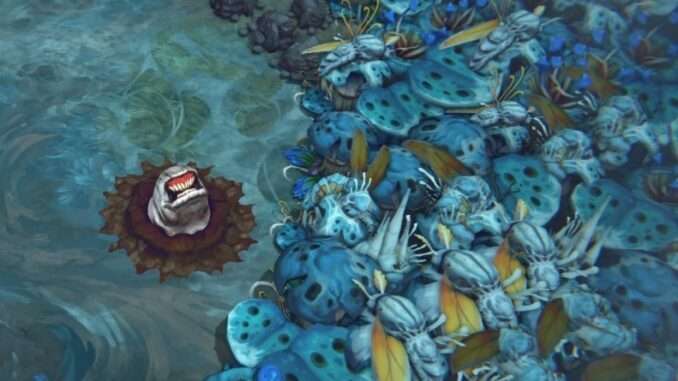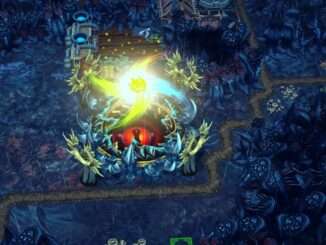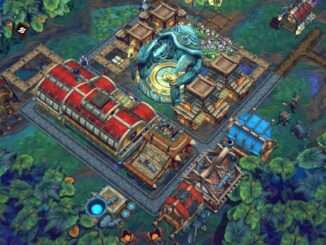
Guide Contents
Basics Explained
Note: Credit goes to vindicar
Seals
Once you embark into the Sealed Forest the cycle will end. If you won the game, you forge the seal which increases the length of your next cycle and gives you some resources too. Any extra fragments are traded for additional resources. This is all displayed in the overview you get when a cycle ends.
You can see the bonuses a seal will give you by hovering over it on the world map.
Now then, once the cycle ends the map is essentially reset and harder seals will be available further away from the Smoldering City. The gameplay loop boils down to:
- Work your way to a seal by making settlements.
- Forge the seal.
- Cycle ends, you start from the Smoldering city again.
- Repeat 1 through 3 while forging harder and harder seals.
Resolve
If you open up the the panel next to each race you have in the settlement you can see what they need and what you’re currently providing. Those things are what you should be working towards in order to increase resolve. Housing for example provides +3 if everyone from that race has a home and another +3 if they have race specific homes.
Some races have overlap in their needs which means that in some cases you should focus on certain things. Humans, beavers and harpies for example like raincoats so producing them will increase resolve. Foxes and lizards don’t care about the rain so making raincoats doesn’t matter as much if you have those two + one of the others.
There’s also several service buildings that provide a boost to resolve. Some cornerstones will influence it too as does leveling your Hearth to level 1. Having a lizard as a fire keeper will also give +1 resolve. Some buildings also increase the resolve of certain species. For example foxes like rainwater so sticking them into such buildings will increase their resolve. This is shown by them having a blue halo around the portrait in the building.
TLDR: Provide your citizens with complex foods and services.
Restricting Items
Restricting it lowers resolve in some situations. Like if you’ve got a stack of raincoats in your warehouse but restrict them so that only humans can use them while harpies can’t, they’ll get a resolve penalty.
You could also restrict food in the beginning to save it for later. The citizens can go on hungry for a while before they actually starve.
Another reason to restrict something is to ensure that you have it for an Order or a Glade event. Or you could be restricting basic foods in order to ensure that they’re used for the production of complex foods and not eaten raw.
Difficulty
I’d say that Viceroy is the “normal” for this game and up to Prestige 4 is still pretty much the same experience. Prestige 5 will increase it a bit and going forwards there’s some clear difficulty hikes.
Playing at a higher difficulty gives more resources and EXP. That’s it. You also need it for some deeds and Achievements if you’re into those.
World Map Progression
Since the map gets reset every cycle that’s normal. The progress you make is in the Smoldering City, unlocking things. Also going further and further every cycle is progress imo.
Sandbox Mode?
You can unlock training expeditions in the Smoldering City tech tree. I guess they’re closest to that. I’ve never tried continuing with a settlement once I’ve won so can’t say anything about that last bit.
When choosing new buildings is there a way to tell if I already have a building that does similar?
Hover over the building in the blueprint selection dialog. There will be a popup, and in the bottom of it there will be a “Current Best” section.
Icons are as following:
- “+” means you can’t currently produce that item.
- Stars mean you can already produce that item at the same efficiency as this building.
- Green arrow up means you can already produce that item, but this building will let you do it more efficiently. The icon under the item will tell you your current production quality.
- Red arrow down means you can already produce that item, and do it better than this building can do.
So you want to go for +s, unless you are constrained by a particular resource. For example, you play with harpies, but the map doesn’t give you much in terms of raw materials for fabric (which you will need for their houses and coats). In that case you can pick, say, Weaver, that offers 3* production of Fabric, even if you already have a 1* production from another building.
Of course, you need to check the needs of your races and go for those products mostly.
More than that, nearly every time you see an icon of a resource (in a recipe, in a order, etc), you can hover it to see what buildings produce it, and at what efficiency.
- Gray caption means “you don’t have this building”.
- Blue means “You have it unlocked, so you can build more of it”.
- Yellow means “You have recovered that building from a ruin, but you can’t build more of it.”
Another place to check is recipe tab. From there you can see which buildings can make what, how much of it they should make, and if they actually do.





Be the first to comment